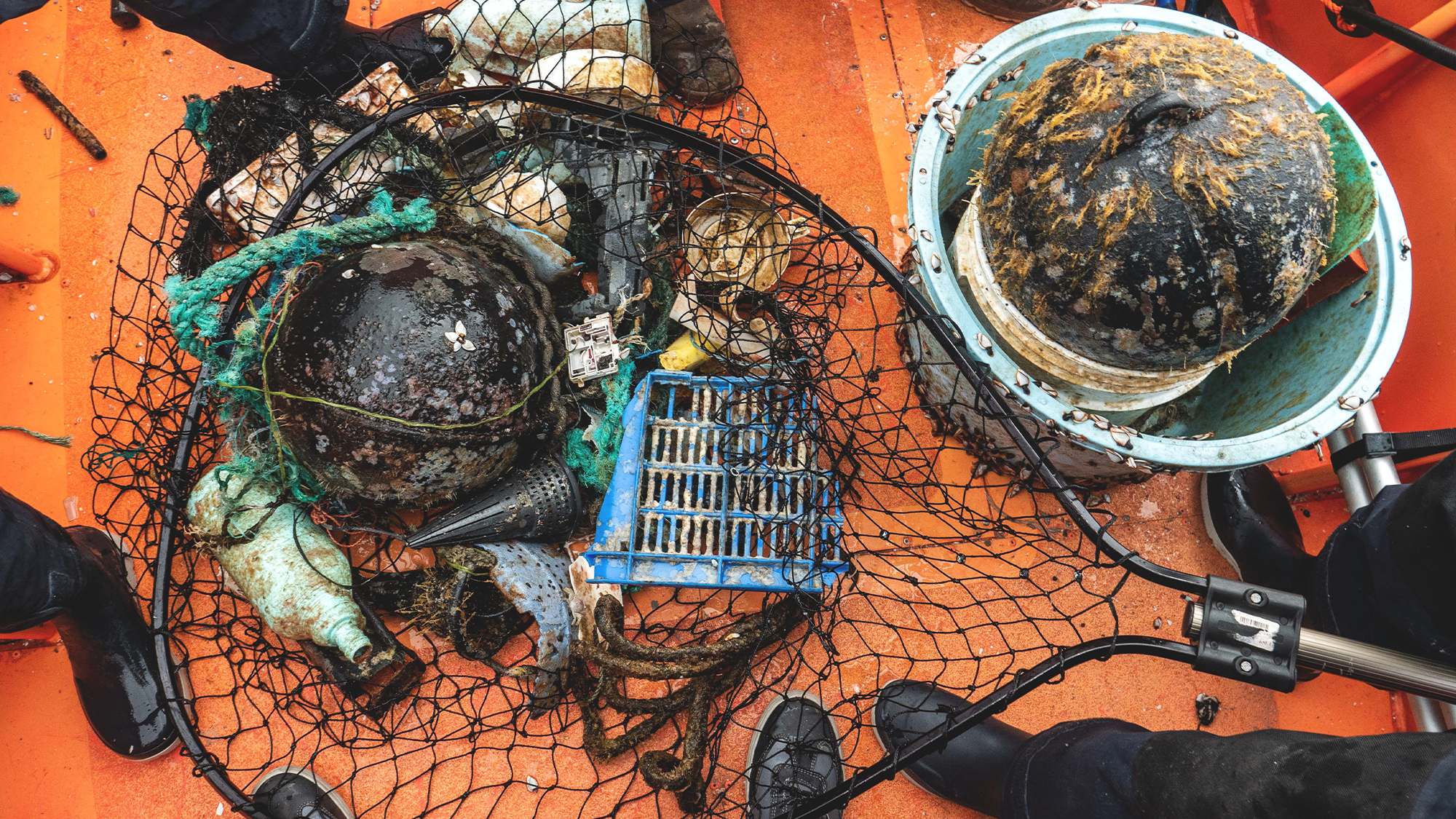

Scientists have found dozens of species of coastal invertebrates organisms thriving Oscar the Grouch style in the Great Pacific Garbage Patch. Roughly 620,000 square miles long, or twice the size of Texas, the floating garbage heap is located between Hawaii and California. Five large spinning circular currents constantly pull trash towards the center of the patch, and it is considered the largest accumulation of ocean plastic on Earth.
These creatures found thriving in trash like crabs and anemones are normally found along the coasts, but the study published April 17 in the journal Nature Ecology & Evolution says that dozens of species have been able to survive and reproduce on the plastic garbage.
[Related: A close look at the Great Pacific Garbage Patch reveals a common culprit.]
“This discovery suggests that past biogeographical boundaries among marine ecosystems—established for millions of years—are rapidly changing due to floating plastic pollution accumulating in the subtropical gyres,” co-author and marine ecologist Linsey Haram said in a statement. Haram conducted this research while working at the Smithsonian Environmental Research Center.
The team only recently discovered these “neopelagic communities,” or floating communities of organisms living in deep ocean waters. Organic matter in the ocean decomposes within a few years at most. But plastic debris lasts significantly longer, thus giving the animals a place to live and procreate.
The team analyzed 105 plastic samples that were collected by The Ocean Cleanup, a non-profit organization that is working on scalable solutions to get rid of ocean plastic, during their 2018 and 2019 expeditions. The samples were found in the North Pacific Subtropical Gyre, a large zone that makes up most of that northern Pacific Ocean and is the largest ecosystem on Earth. Incredibly, 80 percent of the plastic trash that the team looked at showed signs of being colonized by coastal species. Some of the coastal species were even reproducing in their plastic homes, such as the Japanese anemone.

“We were extremely surprised to find 37 different invertebrate species that normally live in coastal waters, over triple the number of species we found that live in open waters, not only surviving on the plastic but also reproducing,” said Haram. “We were also impressed by how easily coastal species colonized new floating items, including our own instruments—an observation we’re looking into further.”
[Related: Ocean plastic ‘vacuums’ are sucking up marine life along with trash.]
While biologists already knew that coastal species can travel towards the open ocean on floating debris or on ships, it was long believed that these species couldn’t thrive or establish new communities at sea. Differences in temperature, water salinity, and the available nutrients between these two environments seemed too vast, but human-caused changes to the ocean ecosystems have forced marine biologists to rethink these ideas.
“Debris that breaks off from this [garbage] patch constitutes the majority of debris arriving on Hawaiian beaches and reefs. In the past, the fragile marine ecosystems of the islands were protected by the very long distances from coastal communities of Asia and North America,” co-author and UH Mānoa oceanographer Nikolai Maximenko said in a statement. “The presence of coastal species persisting in the North Pacific Subtropical Gyre near Hawai‘i is a game changer that indicates that the islands are at an increased risk of colonization by invasive species.”
According to data from the United Nations Environment Programme (UNEP), the world produces roughly 460 million tons of plastic annually and this figure could triple by 2060 if government action is not taken soon. Some individual actions to reduce plastic use is shopping more sustainably, limiting use of single-use plastic like water bottles and plastic utensils, and participating in beach and river clean-ups.
